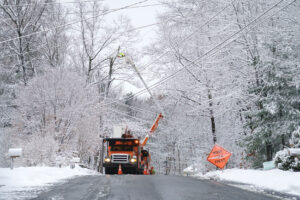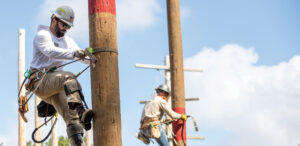From grocery store shelves to repair parts for vehicles, supply chain issues have been a problem in recent years. So much so that the supply chain has become a convenient scapegoat anytime a business falls short of expectations. But, when it comes to electric co-ops nationwide, supply chain challenges are very real and often troubling.
Parts and components electric co-ops use every day are in short supply, which delays planned upgrades for power reliability and increases the costs of parts and labor. Electric co-ops are working to find innovative ways to manage these problems. This year, those efforts resulted in a major win regarding updated federal efficiency standards for distribution transformers that has co-op leaders breathing more easily.
Electric transformers are critical pieces of equipment that help deliver power to consumers. These essential devices adjust electricity voltage, either up or down, to enable safe and efficient power flow.
In late 2022, the Department of Energy (DOE) proposed new efficiency requirements for the distribution transformers that deliver power to every home, school and business in America. Among other provisions, the proposal would have required manufacturers of those transformers to switch to amorphous steel within three years, in place of the grain-oriented electrical steel (GOES) that has long been used. Amorphous steel is chemically altered to make transformers more efficient.
The National Rural Electric Cooperative Association (NRECA), the national trade association that represents more than 900 co-ops, was wary of DOE’s expectations for this change in material, especially at a time when transformer manufacturers are already struggling to keep up with demand. Currently, there is one U.S. producer of this specialty steel.
The availability of federal infrastructure funding is making it possible for co-ops to invest in the capacity, safety and reliability of the systems delivering electricity to co-op communities. That’s good for co-ops and their members, but it’s increasing pressure on the supply chain.
“The domestic supply chain hasn’t caught up with demand, and the industry is going through a learning curve,” said Stephanie Crawford, NRECA regulatory affairs director. “It’s going to take some time for manufacturers to retool their production and producers to make enough amorphous steel to meet the need.”
While co-op leaders appreciate the federal money being made available to update energy infrastructure, that’s also putting the squeeze on supply.
“Everyone across the country is making these investments at the same time, creating demand not just for new transformers, but for all the basic materials and equipment cooperatives need,” Crawford added. “Amid the challenges co-ops are already facing, it presents a problem to ask the industry to make a 100% switch in just three years when the sole supplier only produces enough for about 5% of today’s market.”
NRECA and electric co-ops joined others in the power industry to educate key contacts in Congress, the White House and DOE about supply chain challenges, particularly the requirements for the quick shift to amorphous steel.
“After more than a year of advocacy efforts, the DOE issued its final rule, which allows continued use of GOES in smaller-sized transformers,” Crawford explained. “This provides greater certainty with the transformer sizes cooperatives use the most, particularly in the residential segment.”
The DOE rule also includes a longer compliance timeframe for shifting to amorphous steel. “Extending the deadline to 2029 will help manufacturers adapt for the future,” Crawford said. “The extension allows transformer manufacturers more time to adjust to the new standard and focus on output that electric cooperatives need.”
For the foreseeable future, electric co-ops will continue to face challenges in securing the supplies and equipment they need. The good news is that most have initiated processes to mitigate and manage those risks so they can continue to meet their members’ needs.









